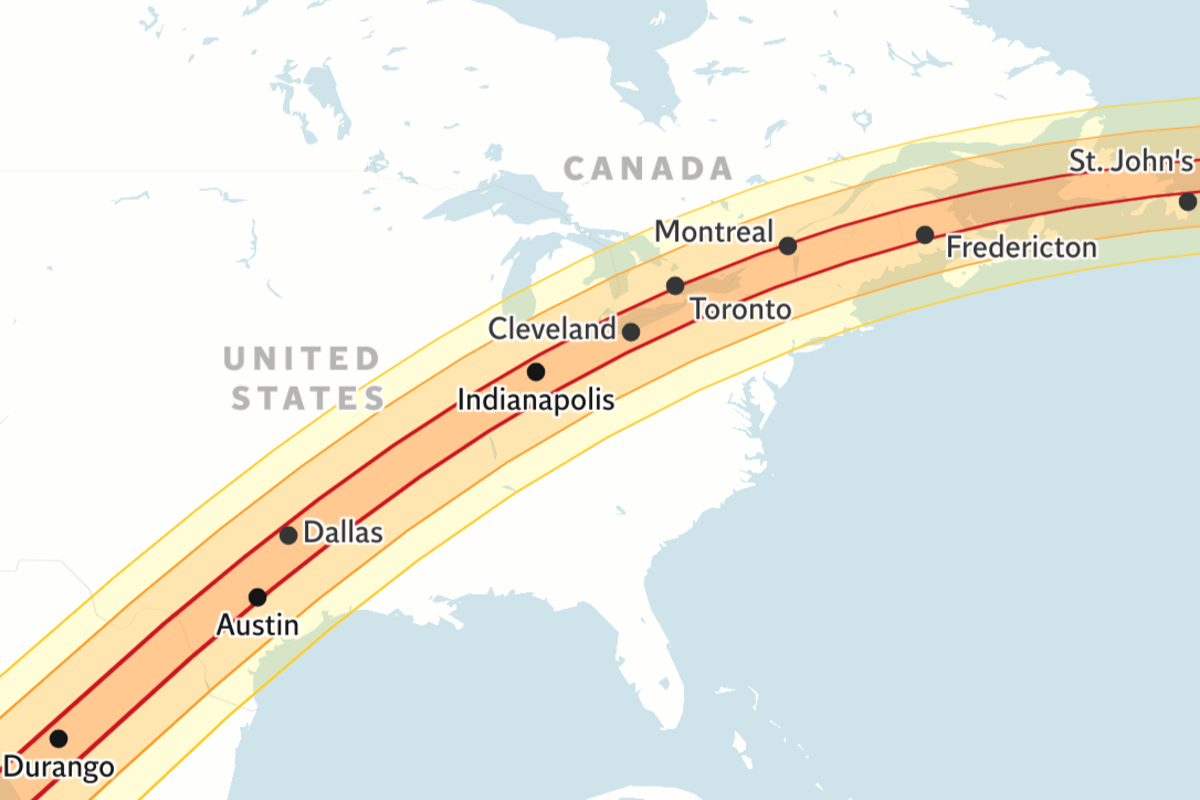Solar eclipse map shows path of totality for 2024 event

The path of totality for the 2024 solar eclipse on 8 April will cross directly over 44 million people in North America, while hundreds of millions more have the chance of witnessing a partial solar eclipse.
The celestial spectacle will see the Moon pass directly in front of the Sun, turning the sky dark for several minutes under the path of tatality. Beginning over the South Pacific Ocean on Monday, it will reach the west coast of Mexico at around 11.07am PDT (7.07pm BST).
The path of totality will then cross over to Texas before it passes over Oklahoma, Arkansas, Tennessee, Missouri, Illinois, Kentucky, Indiana, Ohio, Michigan, Pennsylvania, New York, Vermonth, New Hampshire and Maine.
The solar eclipse will then cross over into Canada, passing over Southern Ontario, Quebec, New Brunswick, Prince Edward Island and Cape Breton.
Major cities beneath the path of totality include Durango, Austin, Dallas, Indianapolis, Cleveland, Toronto and Montreal.
The path of totality for the 2024 solar eclipse on 8 April crosses North America, so will only be visible from Mexico, the United States and Canada, however a partial eclipse will be visible from as far away as the UK and Ireland.
Glasgow will see 11 per cent obscuration of the Sun, while Galway in the west of Ireland will see more than a third of our closest star covered by the Moon. In England, Manchester and Liverpool will see less than 1 per cent obscuration, with the event taking place just before sunset.
Jonathan Blazek, an assistant professor of physics at Northeastern University in the US, said even those not directly beneath the path of totality will have the opportunity to gain a few minutes of “cosmic perspective” during Monday’s eclipse.
“The eclipse is a powerful reminder of our place in the Solar System,” Professor Blazek told The Independent.
“The Sun is such a constant in our lives that it is easy to forget that it is actually a very large star that is quite far away. When the Moon passes in front, it becomes a bit easier to grasp where we are and how we are just a small part of the whole.”
The eclipse comes just seven years after the last total solar eclipse in the US, while another one is set to take place in North America in 2033.
The next solar eclipse over the UK will not take place until 2090.

